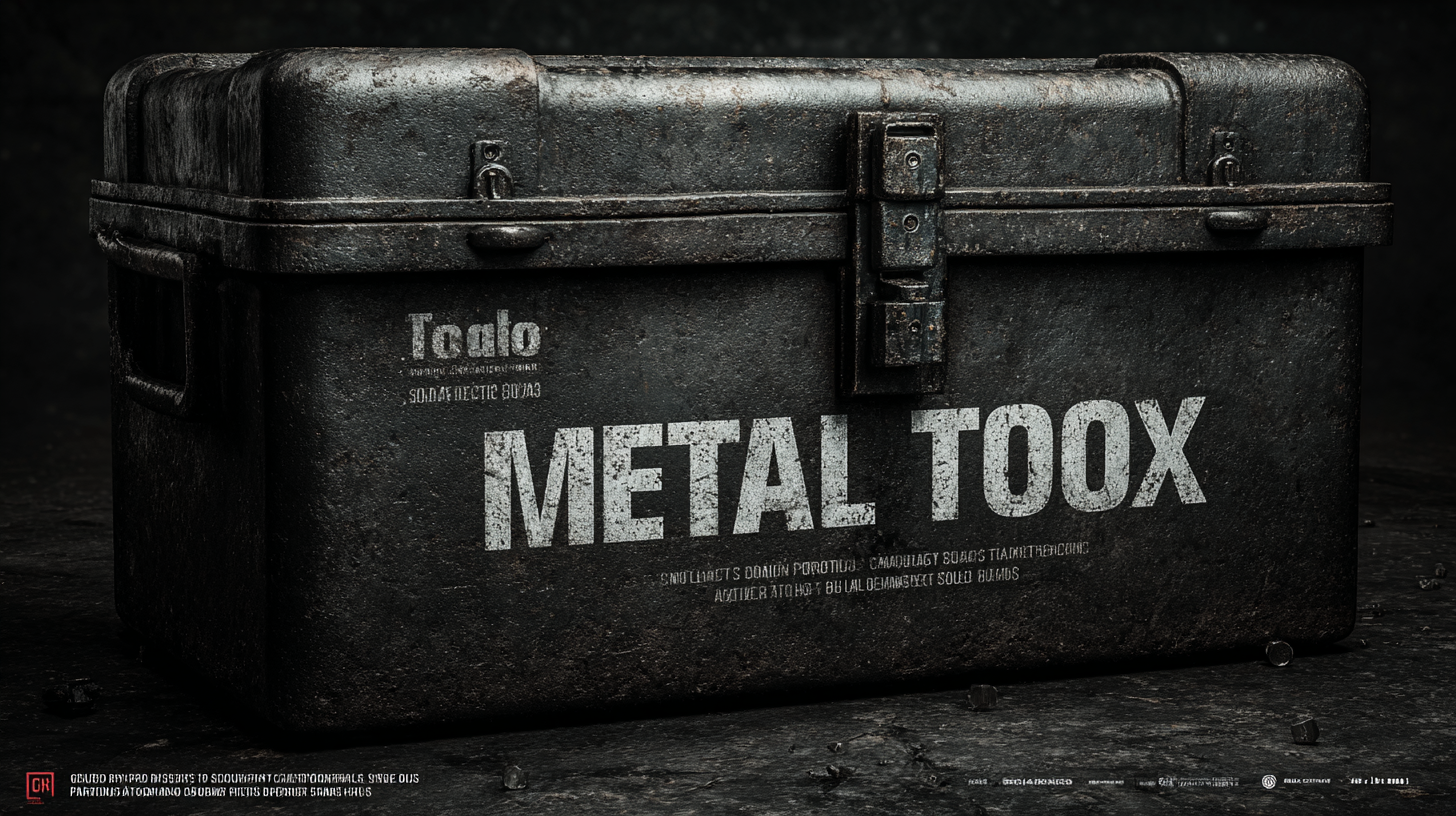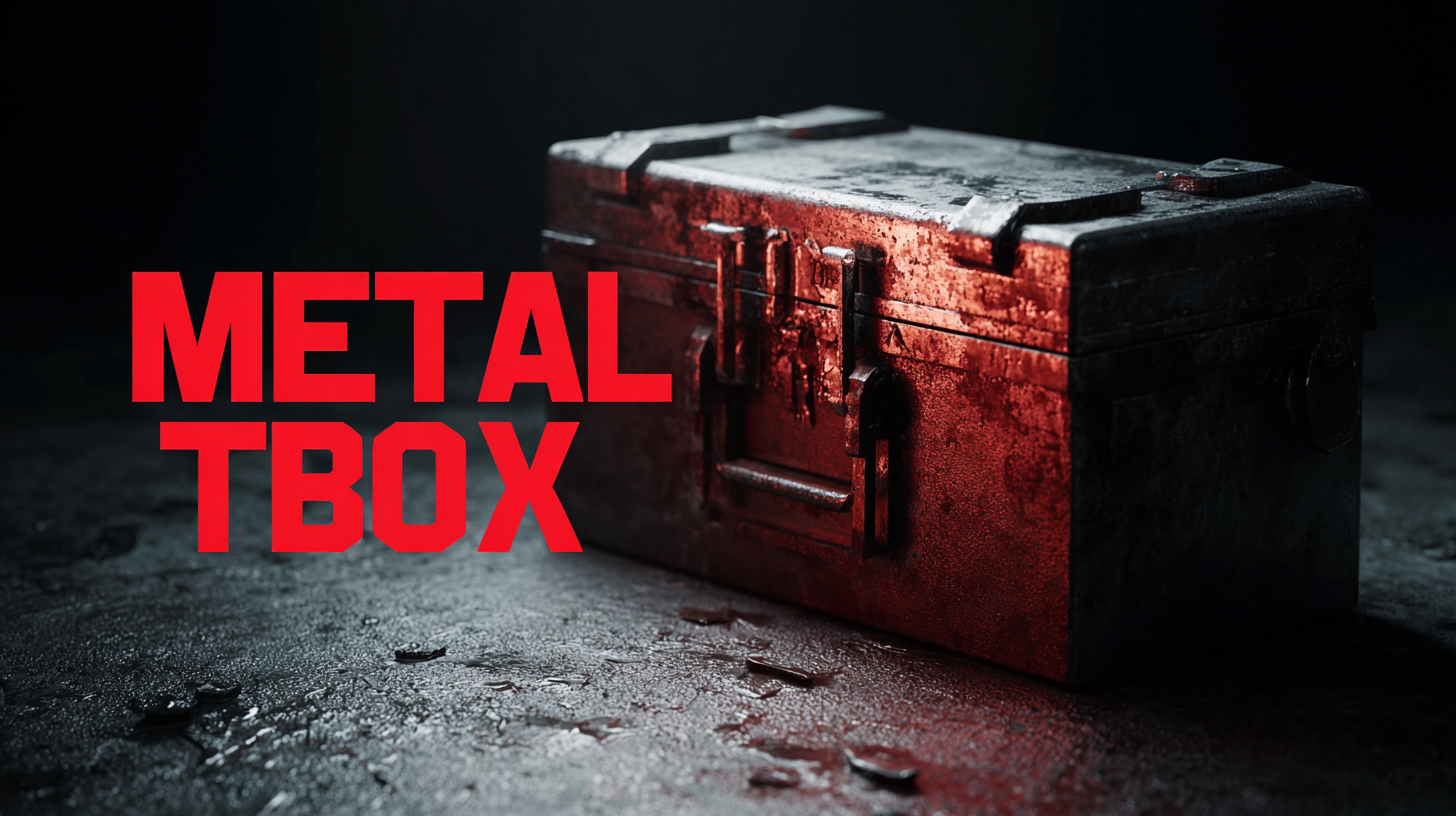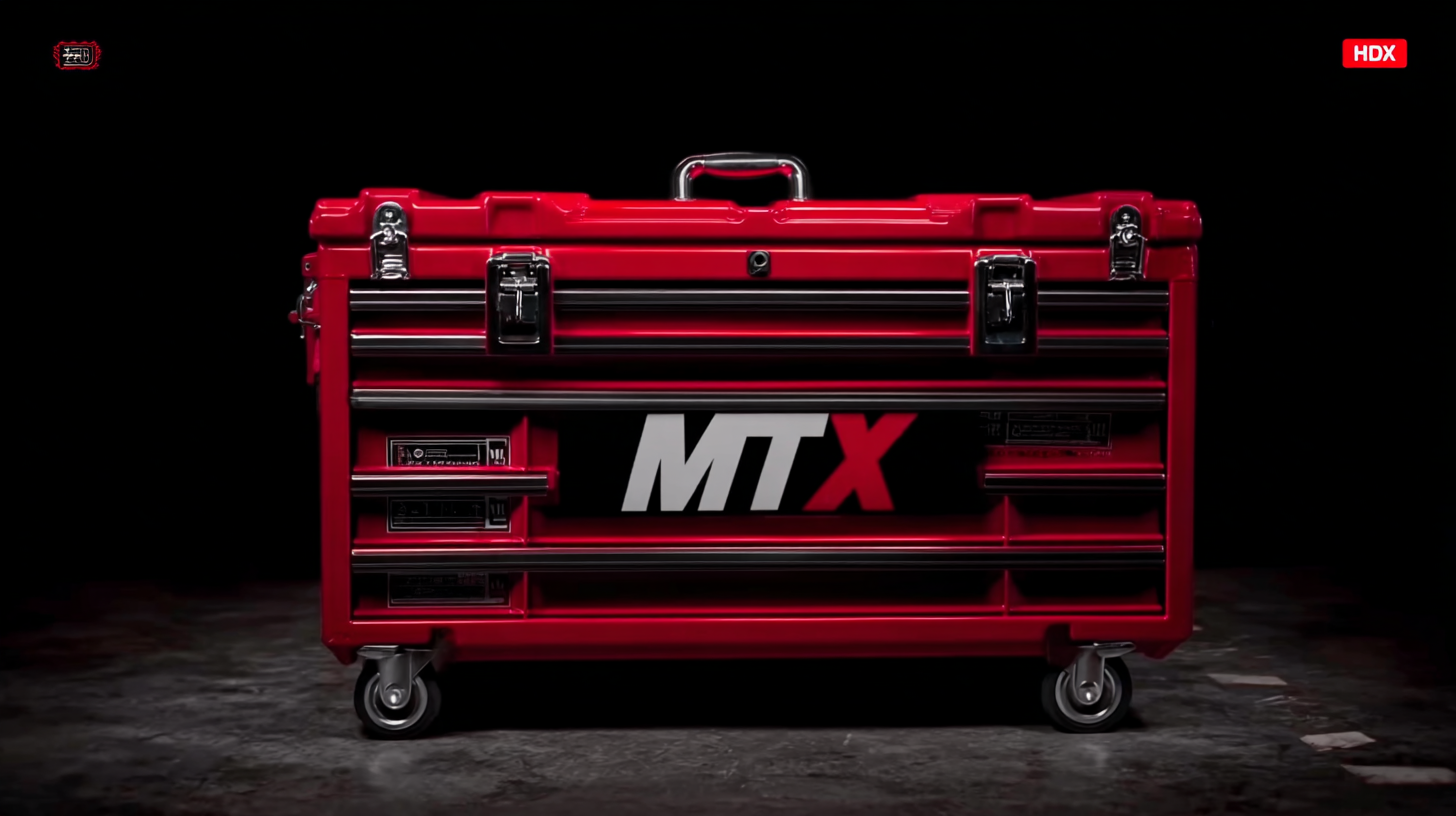In today's dynamic industrial landscape, the demand for high-quality Metal Tool Box solutions is on the rise, driven by the increasing need for efficiency and organization in manufacturing environments. According to a recent report by Market Research Future, the global market for toolboxes is expected to grow at a CAGR of 4.5% from 2020 to 2026, indicating robust demand across various sectors, including automotive, construction, and maintenance. This growth underlines the importance of mastering industry production standards, as companies strive to deliver durable, reliable, and innovative products that meet stringent regulatory requirements and consumer expectations.

As we delve into the industry application cases, we will explore the pivotal reasons why adhering to these standards is essential for creating the best Metal Tool Box solutions that not only enhance productivity but also ensure safety and longevity in usage.
Understanding industry production standards for metal tool boxes is crucial for manufacturers aiming for excellence and sustainability in their products. With the increasing focus on environmentally friendly practices, recent trends have highlighted the implementation of green cooling and lubrication strategies in metal cutting industries, which align with sustainable development goals. The adoption of such methods not only enhances production efficiency but also reduces environmental impact, a key consideration for modern manufacturers.

Additionally, the metal additive manufacturing sector is evolving rapidly, necessitating the establishment of globally-recognized standards. As highlighted in recent reports, adherence to these standards allows for improved quality control and fosters industry growth. Furthermore, standardized procedures, such as simple X-ray computed tomography (CT) testing, ensure the structural integrity of metal tool boxes manufactured through additive methods. This growing emphasis on standardization and sustainability in metal production not only benefits manufacturers but also meets the rising consumer demand for reliable and eco-friendly tools.
When it comes to designing high-quality metal tool boxes, several essential features should guide you in creating a product that meets industry production standards and satisfies users. Firstly, durability is paramount. Opting for heavy-gauge steel not only ensures longevity but also enhances resistance to wear and environmental elements. A robust finish, such as powder coating, can further protect against rust, ensuring that your tool box withstands the test of time.
Another crucial aspect is organization. High-quality metal tool boxes come with customizable compartments or trays, allowing users to store tools in an orderly manner. This facilitates easy access and maximizes space utilization. When designing your product, consider integrating modular features that can adapt to different tool types and sizes, catering to a wider audience of DIYers and professionals alike.
Tip: Always listen to user feedback while developing your prototypes. Engaging with end-users can provide valuable insights into common pain points and preferences, allowing you to refine your designs effectively. Additionally, incorporating features like secure locking mechanisms can enhance the safety of valuable tools and provide peace of mind to users.
When assessing metal tool box solutions, a systematic step-by-step checklist can streamline the evaluation process, ensuring that all crucial factors are considered. Start by defining your specific needs and requirements. Identify the types of tools you will store, as well as their sizes and weights. This will help you determine the appropriate dimensions and storage features your toolbox must have, including compartmentalization options for smaller tools and accessories.

Next, evaluate the materials used in the construction of the toolbox. Look for high-quality metals that offer durability and resist corrosion, as well as any additional coatings that enhance protection against wear and tear. Consider the design and portability features too; are there handles or wheels for easy transport? Inspect the locking mechanism for security, ensuring it offers sufficient protection for your valuable tools. Finally, consider customer reviews and warranties, as these can provide insights into the product’s long-term performance and reliability.
By following this checklist, you can methodically assess different metal toolbox solutions, ensuring that you choose one that meets industry production standards and serves your needs effectively.
When it comes to creating durable metal tool boxes, the selection of materials is crucial. The right metal not only influences the strength and longevity of the toolbox but also affects its overall functionality. Common materials used in manufacturing toolboxes include steel, aluminum, and stainless steel. Each of these materials has unique properties that cater to different needs. For instance, steel is known for its exceptional strength and resistance to deformation, making it a preferred choice for heavy-duty applications. However, it is also prone to rust if not properly treated.
Aluminum, on the other hand, is lightweight and resistant to corrosion, making it an excellent option for portable toolboxes. Its ease of fabrication allows for intricate designs, adding to its aesthetic appeal. Stainless steel stands out for its combination of strength, corrosion resistance, and low maintenance, making it ideal for use in various environments, especially those exposed to moisture. Understanding these properties helps in making informed decisions that ensure the toolbox remains functional, safe, and appealing over time. Selecting the right metal thus becomes a foundational aspect of mastering industry production standards in toolbox solutions.
In the manufacturing of metal tool boxes, compliance with safety regulations is paramount. These regulations are designed not only to ensure the safety of the end users but also to protect workers during the production process. Adhering to strict safety standards such as OSHA (Occupational Safety and Health Administration) guidelines and ISO (International Organization for Standardization) specifications can significantly reduce the risk of accidents and injuries. By implementing comprehensive safety protocols, manufacturers can cultivate a safer workplace and promote a culture of safety that resonates throughout the industry.
Moreover, staying compliant with safety regulations enhances the quality and reliability of the metal tool boxes produced. By incorporating materials and designs that meet safety standards, manufacturers can deliver products that are not only functional but also long-lasting and secure. Regular audits and assessments should be conducted to ensure ongoing compliance, enabling manufacturers to promptly address any potential safety issues. This proactive approach not only mitigates risks but also builds trust with customers who prioritize safety in their purchasing decisions. Ultimately, a commitment to safety in tool box manufacturing not only protects people but also strengthens brand reputation and market position.
| Dimension | Value | Compliance Standard | Notes |
|---|---|---|---|
| Material Quality | Steel Grade A36 | ASTM A36 | Suitable for structural components |
| Weight Capacity | 200 lbs | ANSI/ISEA 105 | Tested for heavy-duty use |
| Paint Finish | Powder Coated | OSHA 1910 | Corrosion resistant |
| Safety Features | Locking Mechanism | ISO 27001 | Prevents unauthorized access |
| Sizing Standards | 20" x 12" x 10" | DIN 8351 | Maximize storage efficiency |
